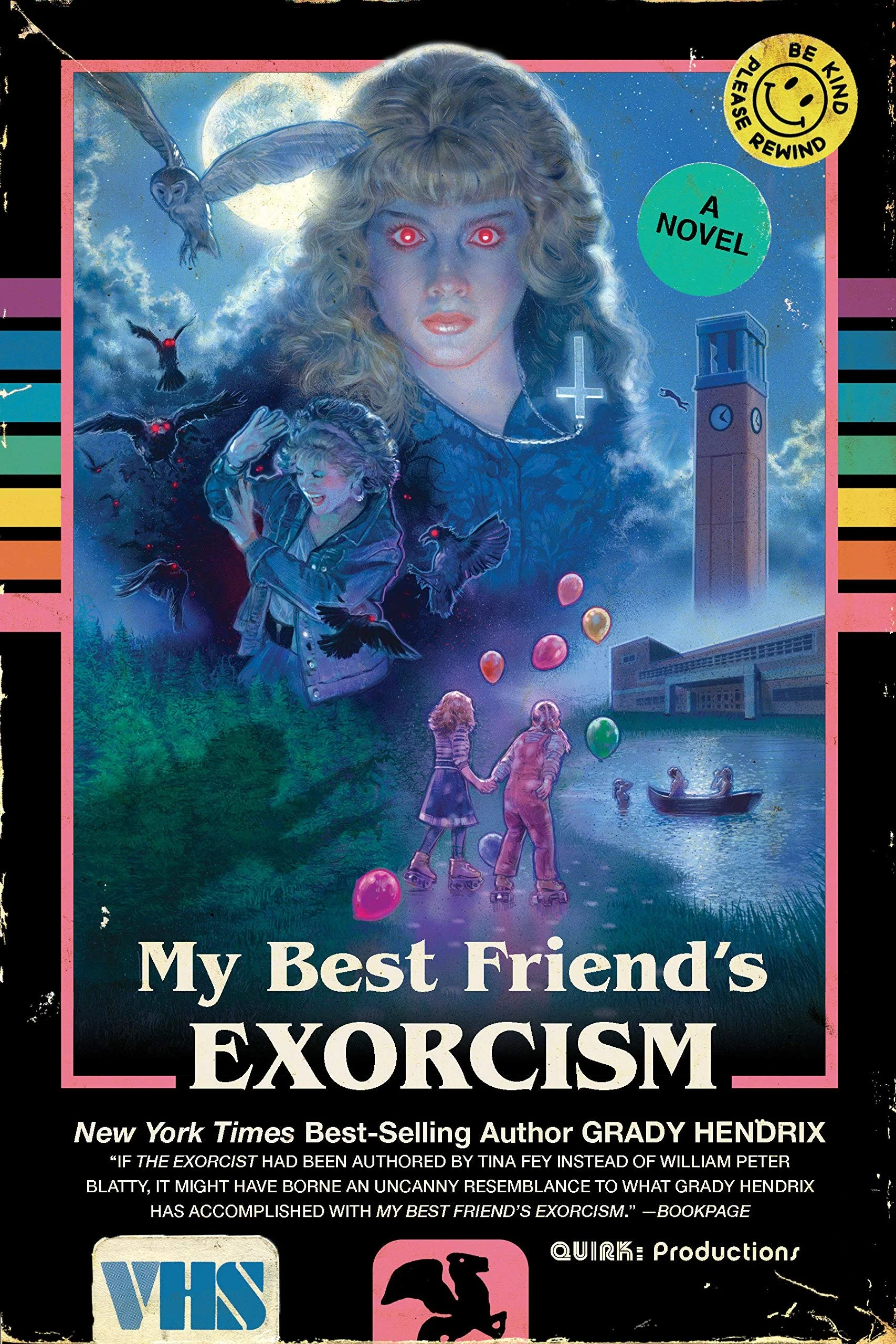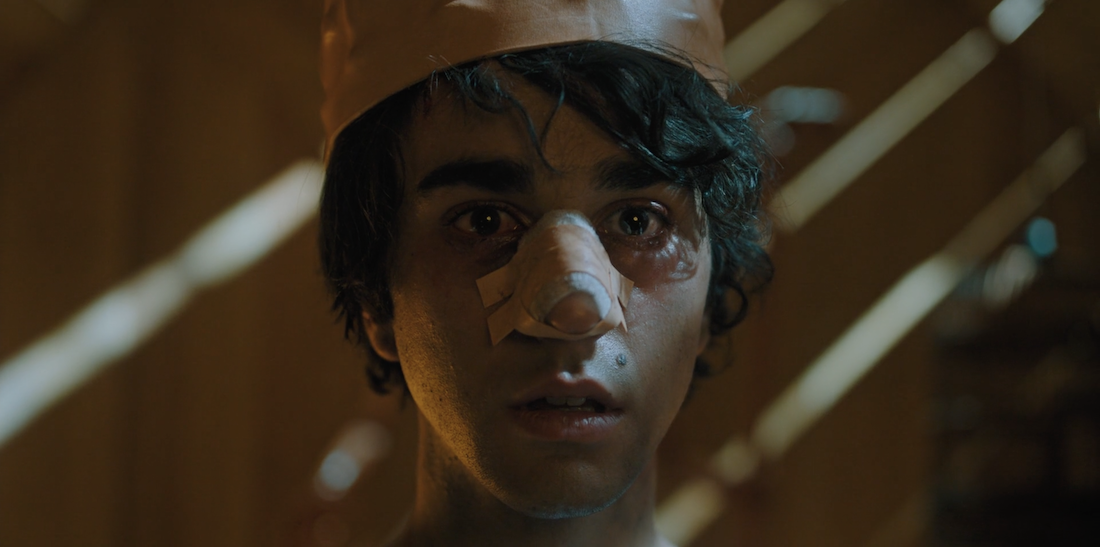What’s An Exorcism, Really?
When I was teaching English, I had a running joke with my students: there are only three things I can’t handle—evil kids, aliens, and demons. I called it my Trifecta of Evil Shit. I passed it off as a joke, but it was the truth. Especially that last one, demons, as it could technically describe the first two as well.
I wish I was only kidding, but it’s been an ongoing fear since I heard the story of Jesus and the Pigs, or the Gnostic one from my Jiddo (grandfather) about Elijah setting demons into those bears to kill those disrespectful children. I mean, that was a bedtime story when I stayed over at my grandparents’ house. Even watching older movies like THE EXORCIST and THE DEVIL’S ADVOCATE shook me hard, let alone new releases like THE BLACKCOAT’S DAUGHTER or HEREDITARY, which haunted my waking and non-waking hours for months. And I still refuse to watch THE EXORCISM OF EMILY ROSE. The tiny true crime voice of integrity still shouts from the back of my head: “That actually happened! Anneliese Michel was murdered during an alleged exorcism as a result of the rituals!” So even if it wasn’t a technical demon possession, or it was a demon possession IN ADDITION TO mental disorder, I can’t enjoy that film.
Then, a few years ago, my friend said that I simply had to read Grady Hendrix’s book, My Best Friend’s Exorcism. (The film adaptation which is now out on Amazon Prime video.) This friend really knows my taste and a recommendation from her is not to be ignored, so I got it on audiobook, which is potentially the most terrifying way to consume a horror story.
And what do people with anxiety do when presented with a stressor? We confront it because, in theory at least, the more we know about a subject, the less scary it becomes.
First stop was obviously Google, and Wikipedia’s answer was predictably flat: Exorcism is the religious or spiritual practice of evicting demons, jinns, or other spiritual entities from a person, or an area, that is believed to be possessed.
After that, I found Matt Baglio’s book on exorcism called The Rite: The Making Of A Modern Exorcist. The 2011 film THE RITE starring Anthony Hopkins is loosely based on this book but it’s not the same thing. This memoir—yep, a memoir—tells the story of a Catholic **priest in training** who goes to the Vatican only to discover that actually, exorcism is real. And they have classes to perform exorcisms. They have these classes because of incidents like that of Anneliese Michel whose exorcists confused mental illness with demonic possession.
That’s the tale as old as time, right? The one I learned when I really pursued education: demons aren’t real and neither are exorcisms; the whole ritual was produced as a means of trying to prevent disorders that people didn’t understand, like epilepsy or schizophrenia.
I told that to my dad once when I came home from college—I told you, my fear is real and deep-rooted and ongoing into adulthood. He said, “Maybe that’s the case sometimes, but demons are real. Just like angels are real.”
I assume that it goes without saying by now that I was raised Christian and continue to practice the faith. The Lebanese side of my family is fully Catholic, so I’d have expected any of them to say demons existed. What’s surprising about this statement from my dad, though, is that he’s Protestant. And not any kind of deep-south snake handling sect, either. Regular Presbyterian. He went on to say that demons can’t possess you if you don’t allow them to do it. That gave me some peace of mind… I mean, people I’m around might be possessed, but they can’t get at me.
And then, ten or so years later, I cracked open The Rite, in which Baglio says actually, yeah, demons can absolutely possess people’s bodies against their will. He calls it “involuntary possession,” and reiterates that it’s a temporary control in which the “Devil… speak(s) and act(s) through [the host] without the person’s knowledge.” He calls those periods of involuntary possession “moments of crisis.” When that’s the case, the host (which I’m saying for lack of a better term) is not held accountable for the sins the body commits while possessed. So there’s that tiny bit of solace, I suppose (49).
The Thing Being Exorcised
Wikipedia calls them “demons, djinns, or other spiritual entities,” and though we can’t trust Wikipedia for everything, this blanket definition works for me: it’s not super clear who’s doing the possessing, and it makes me think that the thing doing the possessing varies based on whom you ask. In the Catholic Church, which is clearly the one I’m gravitating toward, “demons” have evolved from neutral ethereal beings (like djinn, which I consider Chaotic Neutral on the Dungeons & Dragons Alignment Chart) to clear conduits of the Devil’s will (which would be Lawful Evil).
Matt Baglio indirectly supports my claim when he quotes Saint Paul’s letter to the Romans in which Paul is tempted to sin: “I can will what is right but I cannot do it. For I do not the good I want, but the evil I do not want is what I do” (Romans 7:15-23). Baglio then goes on to say that “it is in this capacity of tempting us to go against the good of our nature that exorcists assert the Devil is most active” (49). If we go with this definition, it helps us (me) understand what exactly is happening in an exorcism:
A conduit of evil has taken control of a person’s body. It makes the person do things that go directly against the good in their nature, and they cannot stop it. They may not even realize it’s happening.
The Act of Exorcism
An exorcism is, essentially, giving autonomy back to the soul to whom the body belongs.
Still, I’ve only slightly addressed two schools of thought on exorcism, that of Protestant and Catholic Christians. There are scores of other faiths who practice and believe in exorcism. During my study abroad in northern India, I saw a local Oracle suck a demon out of a fellow student’s knee with a straw and then spit it out into a wooden bowl. The liquid was black like coffee. After that, she was supposed to be able to walk better after her soccer injury and subsequent surgeries.
The act of an exorcism varies from culture to culture, whether it’s reading Bible verses and invoking the name of Christ (as we most often see onscreen) or self-flagellating to prove to the demon that you mean business (Taoism). Generally speaking, though, across cultures, it requires someone well-trained to lead the procedure, which often does involve chanting holy texts.
Becoming an Exorcist
Most of the exorcists I’ve seen on screen or read about in books are priests of some kind. They’re usually Catholic, but occasionally I’ll see an Anglican priest, a Tibetan lama, or a Latter-Day Saint. The actions behind the rituals and rites all seems pretty hazy, at the very least esoteric and, as I mentioned above, not-knowing generates fear.
That’s one reason why I ventured into The Rite: The Making Of A Modern Exorcist. The book talks about priests going to Italy to take a course on how to exorcise demons. When they tell other priests about their studies, several of them say “I don’t believe in that.” But the school exists, and there are people in Rome who want exorcisms.
In My Best Friend’s Exorcism, though, it’s a well-intentioned evangelical musclehead who teaches himself to expunge demons. The Oracle in India? She did it with a straw. Like nearly all folklore, how one can become a conduit for exorcism depends on whom you ask.
Does Popular Culture Get It Right?
I know I’m referencing this book a lot, but it’s the only one I’ve been able to stomach in full: Baglio says that the main exception to “involuntary possession” is when “a person invites a possession to take place, such as during a Satanic ritual. In this case, says an Italian exorcist, the presence in the soul is completed, which means that the will of the person completely identifies with that of the demon… in that case, the person becomes constantly possessed and is like a demon walking the earth.”
I think this is what popular culture sees most often. Well maybe not most often, but pretty often, at least in contemporary movies—HEREDITARY and THE BLACKCOAT’S DAUGHTER come to mind. Even episodes of Sabrina The Teenage Witch show such an invitation.
I’m looking forward to seeing which one is the case in My Best Friend’s Exorcism, but based on the novel, the trailer, and my hopes, Gretchen’s possession is involuntary. It’s something that happens to her, rather than something that she wills into existence.
But this question of wills begs new questions from me: the Devil and these demons are the ultimate tricksters, so it’s almost a matter of consenting with full knowledge, right? I’m not for-sure-for-sure, but it seems like after that invitation, there’s no coming back.
Sources
Baglio, Matt. The Rite: The Making Of A Modern Exorcist. United States, Doubleday, 2010.






